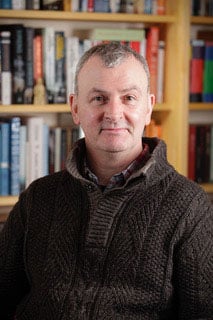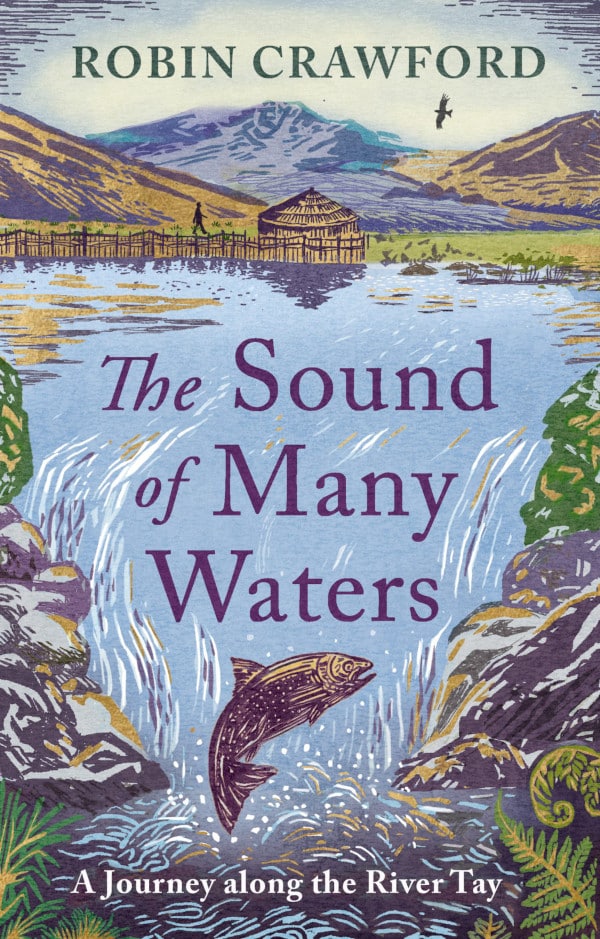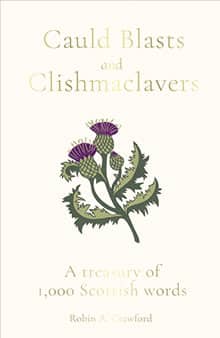Robin A Crawford
He has been on BBC Radio Scotland, BBC Radio 4 and STV television and appeared at many bookshop events and festivals including the Edinburgh International Book Festival; Stanford’s Covent Garden; Callanish Standing Stones, Isle of Lewis; Aye Write, Glasgow; Winter Words Festival, Pitlochry.
Robin lives near Auchtermuchty in Fife with his wife Angie, who is Non-Fiction Buyer for Waterstones, two cats and sometimes a couple of sons and where he gardens, cooks, makes things, goes for walks, reads and writes.
Robin A Crawford is represented at Jenny Brown Associates by Jenny. For all enquiries contact jenny@jennybrownassociates.com

Books by Robin

Sound of Many Waters: A Journey Along the River Tay
Birlinn, 2025
With the widest catchment area of any river in Britain, the Tay drains much of the lower Highlands of Scotland. A vast network of lochs and smaller bodies of water feed the rivers Isla, Garry, Tummel, Almond and Earn, which all in turn flow into this mighty river as it cuts its way through the landscape.
Robin Crawford has a very personal connection to this river, and as he walks along its banks, from its source on Ben Lui until it spills into the North Sea at Dundee, we find paralells between his own experience and the broader history of the Tay.
Reaching back to a prehistoric fish found near Balruddery in Perthshire, we follow its story through time to the present day, with detours to seek gold, clans, battles, forts, disasters, witches and whisky en route.
In amongst this broader sweep of history is Robin’s own story. As he walks, he reminisces and reflects on the small moments of a life on which events turn.

Cauld Blasts and Clishmaclavers
A Treasury of 1,000 Scottish Words
Elliott & Thompson, 2020
A celebration of the irreplaceable magic of language, and the wit and wisdom of 1,000 Scottish words. The Scots language is an ancient and lyrical tongue, inherently linked to the country’s history and identity, its land and culture. In Cauld Blasts and Clishmaclavers, Robin Crawford has gathered 1,000 words from his native land – old and new, classical and colloquial, rural and urban – in a joyful and witty celebration of their continuing usage and unique character.
airt o’ the clicky – bawheid – carnaptious – dreich – eejit – forefochen – Glasgow kiss – haver – inkie-pinkie – jags – kelpie – loch-lubbertie – meevin’ – neuk – oxter – pawky – quaich – ramstam – simmer dim – tattie bogle – usquebaugh – vratch watergaw – yowe trummle

Into the Peatlands
Birlinn, September 2018
The peatlands of the Outer Hebrides are half land, half water.
Their surface is a glorious tweed woven from tiny, living sphagnums rich in wildlife, but underneath is layer upon layer of dead mosses transforming into the peat.
One can, with care, walk out onto them, but stop and you begin to sink into them.
For time immemorial the peatlands have been places – for humans at least – of seasonal habitation but not of constant residence. In this book Robin A. Crawford explores the peatlands over the course of the year, explaining how they have come to be and examining how peat has been used from the Bronze Age onwards.
In describing the seasonal processes of cutting, drying, stacking, storing and burning he reveals one of the key rhythms of island life, but his study goes well beyond this to include many other aspects, including the wildlife and folklore associated with these lonely, watery places. Widening his gaze to other peatlands in the country, he also reflects on the historical and cultural importance that peat has played, and continues to play – it is still used for fuel in many rural areas and plays an essential role in whisky-making – in the story of Scotland
